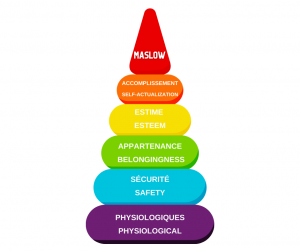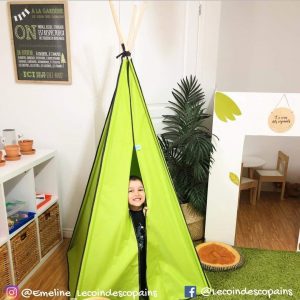By Nathalie Lizé
Early Childhood Educator
The Quebec government preschool educational program (accueillir la petite enfance)
https://www.mfa.gouv.qc.ca/fr/publication/Documents/programme_educatif.pdf
insist that it is essential to start from the children’s needs in order to intervene adequately. As they are the primary agents of their development, listening and respecting their needs must be the basis of our early childhood interventions. Working with this idea in mind makes our work easier. When we stick to what the little ones are experiencing deep inside, we strengthen their emotional security, their esteem and we establish a stronger bond of attachment. Children who feel safe are open to cooperation. As an educator or a teacher, you have the expertise and the skill to see beyond and understand what hides behind a particular behavior. Respecting the essence of a child demonstrates our desire to teach democratically.
Always prioritize the orientations of your educational programs. To understand children’s developmental evolution, you will need a good observation and planning tool. It has to be elaborated and detailed, describing the 4 areas of development (physical and motor, language, cognitive, social and affective). Then, in support, you can use the Maslow pyramid. I will try through this texte to show you how this pyramid can be used on the side, to improve your observation skills and the way you intervene in your daycare.

Understanding and adapting Maslow’s pyramid
This tool that was used in management, was developed by the psychologist Abraham Maslow, in the 1940s. Maslow classified human needs by hierarchy according to 5 levels. For the purposes of this text, I will adapt those levels and needs to infantile development as I do in my daily practice.
First level is physiological needs: to eat, to sleep, to move, to eliminate, to breathe, to be healthy
The second level is the need for safety. emotional, physical, psychological and to feel the integrity is preserved
At the third level, the needs of belonging and feel loved, feeling accepted, cuddled, feeling that you are part of the group (family, friends, living environment)
At the fourth level, is need for esteem: self-esteem, respect for oneself and others
At the fifth level, is fulfillment needs: using creativity, possibility of solving problems, being able to make décisions freely.
Now that you know the different levels of the theory of needs, let’s make some links with our work as educators.
Use the pyramid to observe and understand
With infants, we spontaneously use the first level by asking ourselves these kinds of questions. Is he hungry or thirsty? Is his diaper clean? Is he hot or cold? Is he tired? Is he sick or uncomfortable? Since babies are not really aware of the outside world, answering these questions will most of the time be enough to stop them from crying. Physiological needs are the basis of human well-being , they are life essential. So, pay attention when a child shows a bad mood, a lack of concentration, and difficulty in functioning normally with others. Make sure that these physiological needs are met and are not the cause of these unusual behaviors and if so, adapt your interventions and planning. You can postpone this planned activity until tomorrow but you will not have a second chance to reassure this little one who needs it.
The second level
By being present and listening to the feelings of the individuals in your group, you respond directly to the second level which involves security needs (emotional, physical, psychological). In your premises, whatever your environment, preschool classes, daycare or other, make sure to have a quiet place where children can retreat when they are not feeling well like the Natis Design tipi.
You can Read my text ” why having a calm down corner” on the Natis Design blog for more ideas.
https://natis.ca/en/why-having-a-calm-down-corner-in-your-class-is-a-must/
Keep observation and communication in mind. Older children, with your help and support, are able to express what is bothering them. But, it is with the youngest that your expertise will be essential. You know the development and the needs of your little ones, take the time to watch them live. Reassure them and accompany them. Name their emotions so that they learn to understand them. Provide them with a safe and suitable environment. Be present and reassuring and create a solid bond of trust. It is also essential to communicate regularly with parents. Thus, if a major change or event disturbs the individual or familial balance of the members of your group, you will be able to ensure their need for emotional and psychological security.
The third level
At this level, respect for the uniqueness of children stands out the most. The need to belong takes a lot of place in early childhood. The little ones must feel that they are important in their environment, that they are understood and loved. When adults emphasize their uniqueness and allow them to be themselves, they feel completely part of the group. By listening to what they have to say and focusing on of their positive individual differences, they know they matter. Your job is to understand them by taking your observations further and making sure that they are entitled to be who they are at all times. Children who feel included and understood will be balanced and good-humored children.
The fourth and fifth level
When you observe daily and effectively and use your results for the well-being of children, it is in their best interest. This process allows you to know them, to value them, to help them live positive experiences and successes. When you understand every child’s development, you are able to make interventions that enrich the lives of children and help them go further. As éducators or teachers when you use active learning, the little ones feel heard. Also, it is essential, you always push their curiosity further, by providing them with varied and adapted material and by demonstrating confidence in their abilities. When you work with democratic interventions you allow their esteem to grow and they feel their needs are fulfilled and they have the necessary place for a balanced development. The fifth level, the need for fulfilment is answered.
In conclusion, I would tell you, observe, observe and observe. Observe every day and at any time. Take the time to understand what is the need involved in unpleasant or complicated situations and when a child expérience an emotional outburst. What do the little ones want you to understand through their behavior, their lack of interest or cooperation? What unanswered need is it hiding? Don’t forget to use the 4 areas of development throughout the process. I work with Maslow’s pyramid as a guide, one tool among others. For me, it is a complement to my other means, to intervene on a daily basis. As mentioned above, you will understand that it is adapted to our educational reality and that the original model was originally used in management.
Hope I stimulated some curiosity and that you will expand your tool box with Maslow’s pyramid.
Talk to you soon
Nathalie Lizé
Educator and familial coach



